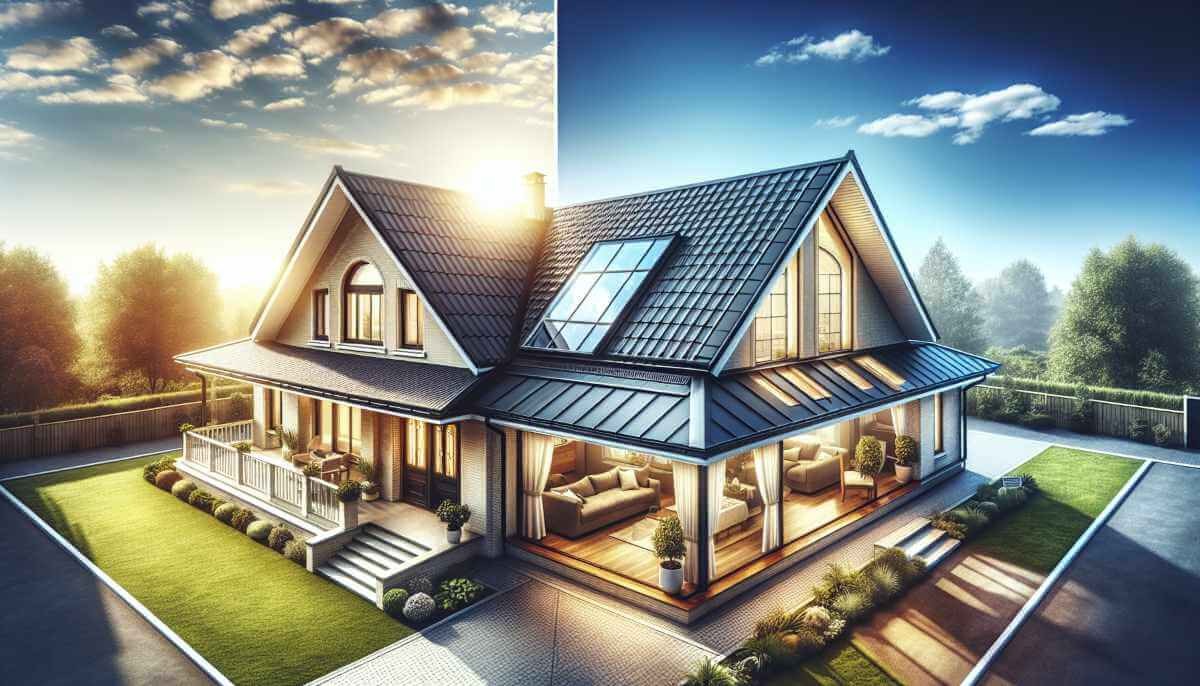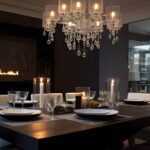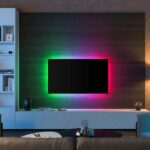Roof windows and skylights aren’t just ceiling windows. They boost natural light, uplift ventilation, and up your house’s potential selling price. So Roof Window vs Skylight, which one is better? You can use either of these methods to bring fresh air and sunshine into a dim or unwelcoming area.
Your house’s layout impacts its comfort and energy efficiency. That tied directly to the reach of natural light and air purity.
We will discuss roof pitch and skylight installation. Skylights that open and those that don’t can impact light and airflow in your home.
In addition, think about how they can boost the selling price of your house.
That includes the handy elements like windows in skylights. You’ll get to know about different types of windows as they apply to skylights. We can guide you in choosing a skylight window that fits your style and works for you.
Roof Window vs Skylight: What it means and how it works
A basic understanding of roof windows and skylights helps you choose the right option.
For a quick overview, here’s a breakdown:

Type and operation:
- Skylights are fixed installations without vents that let in sunlight.
- Roof windows allow light and air into your home. You can open them to vent hot air.
Material and design:
- Some skylights have wired glass for fire resistance. They rarely open.
- Roof windows are typically made of transparent glass and are designed to open wide. That allows for more natural light and ventilation.” Some models can even serve as egress exits in an emergency.
Installation and Use:
- Roof windows require a minimum 15° pitch, and many models are manually operated. So they are recommended for areas within reach.
- Skylights are not operable but can be installed on sloped and flat roofs, offering flexibility in design. They require regular maintenance to prevent visibility issues.
It’s simple for homeowners. That comparison points out the essential contrasts in how it works, what it looks like, and what you need to put it in place.
Benefits of roof windows
Roof windows do more than add an artistic touch; they boost the quality of our homes in several ways. Let’s take a moment to explore them in detail.
Natural Light and Ventilation:
Roof windows boost the amount of sunlight in the room, complementing wall windows. That makes folks feel happier, and we don’t have to pay so much for artificial lighting.
But that’s not all. These windows also give us fresh air. So, we spend less on air conditioning in summer and can stop mold from growing in damp places like bathrooms.
Energy Efficiency and Acoustic Insulation:
Twin-layered roof windows loaded with sound-proofing features block noise from bustling streets and low-hovering airplanes. Plus, they uplift your house’s warmth, playing a big part in energy saving.
Safety, Maintenance, and Aesthetics:
If there’s a need for escape routes, some roof windows can serve as these. They meet building codes when placed low.
VELUX windows are praised for their top-notch materials and are a little need for upkeep, boosting a room’s use and looks.
By law, roof windows may be needed in certain cases. One example is turning a loft into a living space to comply with fire laws.
This shows how roof windows aren’t just nice to look at. They also bring real use to homes and more.
Benefits of skylights
Skylights offer unique benefits that enhance home functionality and aesthetics.

Aesthetic appeal and versatility:
Skylights fit all types of homes. Classic, sloped roofs or homes with long halls, it doesn’t matter.
There are fixed and opening styles to suit different designs. Skylights are great; they can be custom-made, giving a unique twist to any area.
Natural Light and Ventilation:
Skylights bring a glow, opening up spaces. Are you looking for a breeze? Try vented skylights!
They freshen the atmosphere and cut down on AC usage. Don’t forget about tubular skylights. They offer light during the day without any heat escape.
Energy Efficiency and Cost Savings:
Skylights are energy savers and usually cheaper than roof windows. Set upright, they cut down on the need for artificial light. Skylights use solar power?
That’s awesome! They could be eligible for a 26% tax discount from the federal government.
Roof Window vs Skylight Comparison
How your roof looks will influence your choice of roof windows and skylights:
Installation Surface and Operation:
Roof windows are made for angled areas. They open up to let air in. Skylights, on the other hand, don’t usually open and are put in flat spaces.
Compatibility and Cost:
Skylights tend to cost less and require less effort to install. They’re also friendly on the wallet. On the other side, roof windows can be pricier. That is because they can open and close and also need some changes to your home’s structure.
Maintenance and Glass Type:
- A roof window may require more maintenance and leak.
- Skylights should have their glass cleaned and debris removed.
Both options require consideration of your home’s architectural style, ventilation needs, and budget.
Installation considerations
There are several factors to consider when installing roof windows or skylights:
Roof compatibility and installation challenges:
A slanted roof is great for roof windows. They help with water drainage. While skylights can work on both flat and angled roofs, they stand out on sloped ones.
Generally, skylights go well with fixed-framed roofs. Truss-framed ones, made from pre-assembled triangles, can be tricky. This is because there’s less room and possible structural problems.
Professional installation and maintenance:
A professional should evaluate your roof’s tilt, sun exposure, and room requirements before installation.
Roof windows and skylights need maintenance, such as locating leaks and ensuring cleanliness. Regular inspections by experts are beneficial to detect issues early.
Customization and Energy Efficiency:
Skylights bring added perks like tint options and protective coverings to adjust light and warmth. Roof windows may come with unique layers and argon gas that heighten your home’s insulation.
That can significantly enhance your house’s energy efficiency and comfort, whether it’s fixed or adjustable, and the direction it faces (north or south).
Energy Efficiency and Sustainability
Roof windows and skylights significantly affect energy consumption. However, their design and installation should considered.
Energy Star Ratings and Solar Heat Gain Coefficient (SHGC):
- Energy Star-rated skylights and roof windows reduce heating and cooling costs.
- Lower SHGC indicates better shading ability. That means less solar heat is transmitted through the skylight or roof window.
Glass Technology and Location Considerations:
- Low-emissivity (low-E) low-E glass minimizes energy loss, making it an excellent choice for skylights and roof windows.
- It is crucial to consider placement; in warm climates, north-facing installations prevent excess heat, while in colder climates, south-facing ones maximize sunlight.
Technologies for efficient glazing:
Roof windows and skylights have energy-saving features like insulated glazing and heat-absorbing tints. These keep your home cool in summer, saving on AC bills by avoiding unneeded heat.
In winter, they trap warmth inside. Pick and set up roof windows or skylights with these energy-savers. You get the bonus of natural light and fresh air.
In conclusion, we talked about Roof Window vs Skylight. Like what sets apart roof windows and skylights, their good points, and things to keep in mind. Roof windows offer natural light and air, but skylights give beauty and save energy.
These parts can help you make wise decisions based on your house’s design, your likes, and your energy-saving needs.
Both a roof window and a skylight can help bring more brightness into our houses and make life better. What you pick depends on your liking, the money you can spend, and your house’s traits.
What you decide could impact how much energy your house saves and its resale worth along with its instant mood and uses.
We say homeowners must think over their choices well, keeping in mind relaxation, living green, and looks.
FAQs about Roof Window vs Skylight
Do Skylights Offer Any Advantages Over Traditional Windows?
Yes, skylights, in addition to windows, significantly benefit air circulation. Fresh air can enter a living area through skylights, preventing it from overheating and refreshing it.
What Are Some Potential Drawbacks to Installing Skylights?
Skylights have several disadvantages, including:
Heat Gain and Loss: Like all windows, skylights can negatively impact your home’s thermal efficiency.
Insulation Issues: Skylights may not provide adequate insulation.
Risk of Moisture and Leaks: There’s potential for moisture buildup and leak problems with skylights.
Can Installing Skylights Increase Home Value?
Yes, skylights can boost a house’s worth. They make dim attics or lofts usable and can add to a home’s usable area, saving on pricey remodels.
Is Skylights worth considering for my home?
You can add skylights to your house, which can be fantastic. They make rooms look bigger, let in more sunlight, and connect you to the outdoors. But remember, putting in skylights is a big project and investment.




















Average Rating